Choosing a VoIP provider for your business is like finding the perfect pair of shoes. It must fit perfectly, providing comfort and functionality every day. Nextiva and RingCentral are the Nike and Adidas of the VoIP world, each offering similar functionality with a unique approach.
But, when it comes down to deciding between the two business phone services, which one is the best? Is it Nextiva for its all-in-one communication features, or does RingCentral’s global reach give it the edge?
Our guide compares each platform to help you make the right decision for your business. While we believe Nextiva is better in many ways, there are a few reasons why RingCentral could meet your business needs.
At a Glance: RingCentral RingEX vs. Nextiva VoIP
| Feature | Nextiva | RingCentral RingEX |
|---|---|---|
| Monthly price (20–99 users) | Starts at $30 per user | Starts at $20.00 per user |
| Meets Requirements (G2) | 9.0 out of 10 | 8.8 out of 10 |
| Ease of use (G2) | 8.7 out of 10 | 8.4 out of 10 |
| Ease of setup (G2) | 8.3 out of 10 | 7.7 out of 10 |
| Quality of support (G2) | 9.0 out of 10 | 7.8 out of 10 |
| Video conferencing | Up to 250 participants per meeting | Up to 100 participants per meeting |
| Communication channels | Voice, text messaging (SMS), video conferencing, team messaging, internet fax, social media, voicemail | Voice, text messaging (SMS), video conferencing, team messaging, internet fax, voicemail |
| Annual discount | Yes | Yes |
| Reliability | 99.999% uptime | 99.999% uptime |
| Unlimited online fax | Add-on | Available on Advanced and Ultra plans |
| Screen Pops | Advanced: caller ID and multiple fields | Basic caller ID |
| Mobile App | iOS and Android apps with full-featured calling, messaging, and video conferencing capabilities | iOS and Android apps with calling, messaging, and video conferencing. Some advanced features may be limited on mobile compared to the desktop app |
| Integrations | Outlook and Google Contacts, Additional integrations based on tier | Available based on tier |
| Customer support | 24/7 email, chat, and phone support | Phone support and live chat |
✅ Cost & value:
Nextiva is more budget-friendly. Core bundle starts at $30/user/month with unlimited calling, video, and features. RingCentral costs slightly less at $20/user/month (annual plan), but lacks extras like online faxing and toll-free minutes.
✅ Features:
Nextiva offers competitive prices and various features, including call recording, generous minutes, and call recording. However, RingCentral may require additional fees for features like call recording, potentially increasing costs.
✅ Usability:
Nextiva has a user-friendly interface and mobile app for smooth communication and collaboration. RingCentral’s usability might be less intuitive than Nextiva’s, especially for non-technical users.
✅ Choosing the right option:
Both Nextiva and RingCentral are strong VoIP service providers, but Nextiva offers a more cost-effective solution with a user-friendly interface. It also generally receives higher reviews for its customer support quality and responsiveness. RingCentral might be a better choice if global reach & extensive integrations are crucial for your business workflows.
Nextiva vs. RingCentral VoIP Product Features & Pricing

Both RingCentral and Nextiva offer similar telephony features that appeal to business owners regarding call management features. However, there are a few instances where one service outperforms the other.
Nextiva Plans, Pricing & Features
With the Nextiva Core plan, which is priced at $30 per user monthly, you get:
- Unlimited voice (phone calls) in the United States and Canada
- Video conferencing (screen sharing available on the Professional plan or higher)
- Desktop and mobile apps (iOS and Android) for softphone functionality
- Auto attendant
- Business voicemail
- A toll-free number with 1,500 minutes included each month
- Microsoft Outlook and Google Contacts integrations
- Video meeting recording
- International calling rates are as low as $0.01/min.
- Call logs with detailed call history
- Send and receive unlimited internet faxes
Let’s say you upgrade to the Nextiva Power Suite, you get everything for $60 per user monthly:
- Call center functionality is available for small teams (setup fee applies).
- Unlimited participants on conference calls
- Unlimited video conferencing participants
- Multi-level auto attendant
- Toll-free business number with 12,500 minutes included
- HubSpot integration is included on the Professional plan and higher
- SMS/MMS text messages for up to 2,000 messages per user
- Call recording (on-demand and automatic)
- Voicemail transcription with email or SMS notifications
- All advanced CRM and business software integrations
- Microsoft Teams integration with its team collaboration tools
- Enterprise-ready single sign-on support
No matter your budget, Nextiva has a business communications platform that works for you.
RingCentral Pricing Plans & Features
The RingCentral Core plan is $20 per user monthly ($240 annually, paid upfront) with slightly different features and more limitations. RingCentral Core plan includes:
- Unlimited calls across the United States and Canada
- Toll-free phone number with only 100 minutes
- Business SMS up to 25 messages per user
- On-demand call recording
- Recorded video meetings
- Basic integrations (Office 365, Google, Slack)

Related: RingCentral Pricing, Plans, & Feature Breakdown
However, if you opt for the Ultra plan at $35 per user monthly, you get pretty much everything they offer, with a few exceptions. The RingCentral Ultra plan includes:
- Toll-free phone number with only 10,000 minutes
- Video meetings with up to 200 participants
- Automatic and on-demand call recording
- Unlimited internet fax
- Unlimited file storage with a limited retention period
- Multi-site (office) admin and billing
- Product adoption analytics
- Device analytics for troubleshooting downtime
- HubSpot contact syncs up to 10,000 records
- Popular CRM integrations with Salesforce, Zendesk, and more
- Industry-specific integrations with VMWare, Canvas, Smarsh, and more
- Developer APIs for voice, messaging, video, and configuration
For pricing, Nextiva is the clear winner here. However, RingCentral takes the lead when it comes to more features, but it will cost you.
RingCentral vs. Nextiva Analytics
RingCentral also allows you to track important KPIs and metrics. Through the analytics portal provided by the solution, you can get reports on adoption and usage, organization numbers, quality of service, VoIP phone device status, and live reporting.
Nextiva’s built-in business intelligence tool helps you make more informed business decisions, find hidden insights, and boost staff performance.
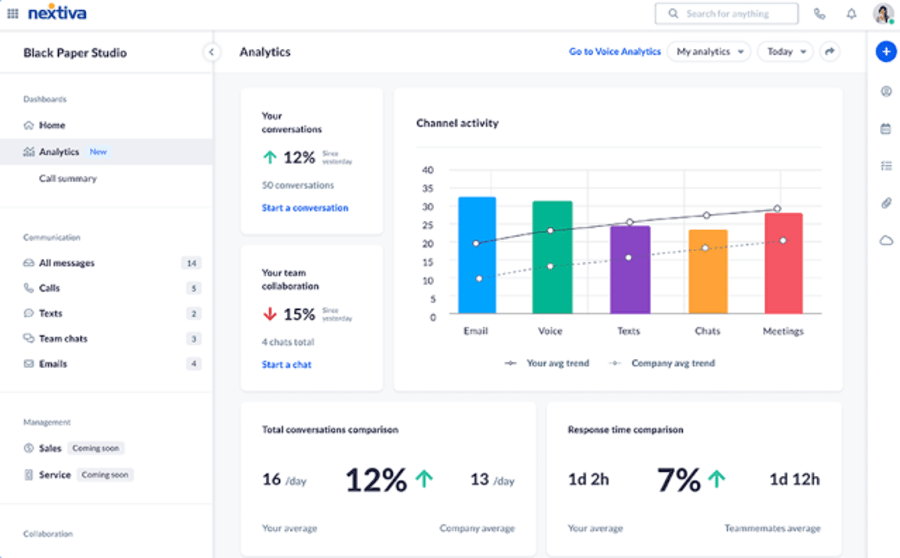
The Nextiva platform, in particular, has a real-time analytics tool that provides stats on everything in your contact center. You can also see the voice analytics data you need with Nextiva’s interactive maps and graphs.
When deciding which platform’s analytics capabilities best suit your business, consider factors such as ease of use, customization options, and integration with other tools.
Nextiva vs. RingCentral Customer Support
According to reviews on G2, RingCentral’s customer service falls under Nextiva’s shadow.
For “Quality of Support,” Nextiva scored 9.0, while RingCentral came in at 7.6. And it’s not just the number of reviews—Nextiva has 2,202 customer reviews, while RingCentral has 683.
But if that wasn’t enough, Nextiva came out ahead on these G2 ratings:

To be fair, RingCentral scored higher than Nextiva in file sharing, IVRs, and automatic call distribution functions.
Customer support availability
While you won’t need live customer support, you’d miss it if it wasn’t there. Nextiva offers 24/7 phone and live chat support Monday through Friday, 5 am to 6 pm MST. And on weekends, 5 am – 4 pm MST.
But not every request is necessarily a problem. If you want a second opinion or a few pointers on setting up your call flows or holiday scheduling, we’re happy to help you around the clock.
Nextiva serves you and your team well regardless of how you ask for help.
RingCentral has its own 24/7 customer service and professional onboarding, but no information on its pricing is published.
RingCentral Outages & Service Uptime
Is RingCentral down?
On January 22, 2025, RingCentral experienced a major outage across its voice and contact center services throughout North America. Thousands of customers reported being unable to receive inbound calls or place outbound calls and could not contact customer service.
Affected RingCentral services:
- Calling – Inbound
- Calling – Outbound
- Contact Center
- RingCX

More information is available from the RingCentral Status Dashboard.
Thousands of users reported outages were detected by Downdetector, operated by Ookla, starting at 10:18 AM PST.

Nextiva and RingCentral claim to have 99.999% uptime and carrier-grade data centers, meaning you should never lose service for more than six minutes each year. But the proof is in the uptime reports.
RingCentral’s cloud architecture is built on two data centers to serve the United States. VoIP calls must travel thousands of miles if one data center gets congested or goes offline. And that means high latency and dropped calls.
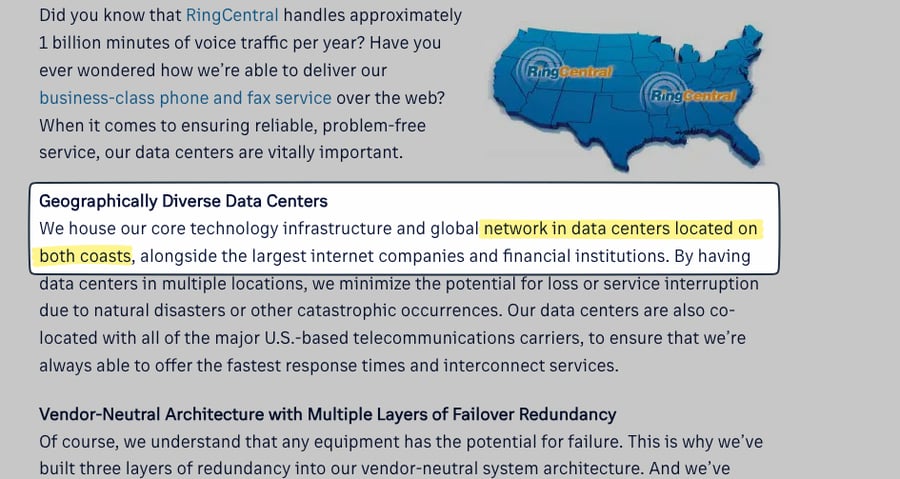
But Nextiva is different (for a good reason).
We’ve set up a redundant data center architecture across eight locations across North America. Each one is resilient against common network attacks and carrier route changes. This means Nextiva customers benefit from the highest uptime in the industry.
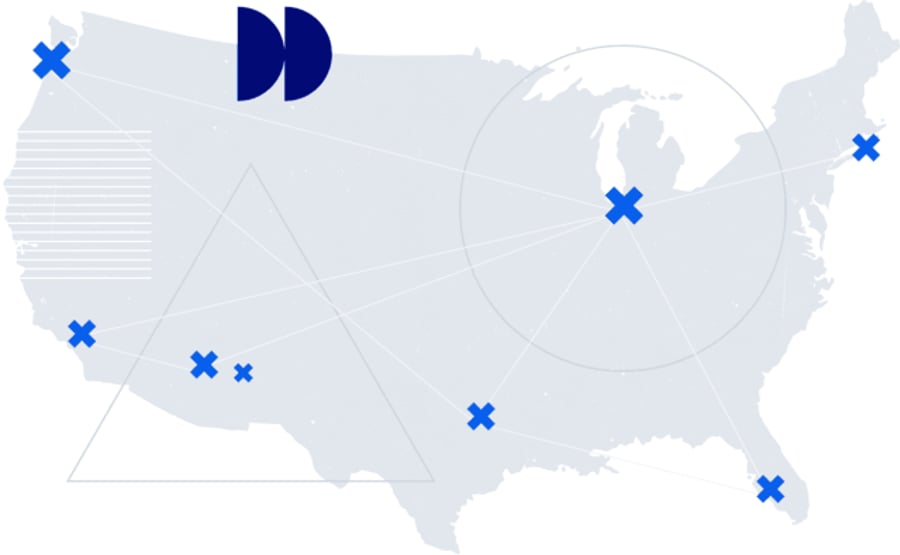
Remember those uptime reports we mentioned… which one would you choose?
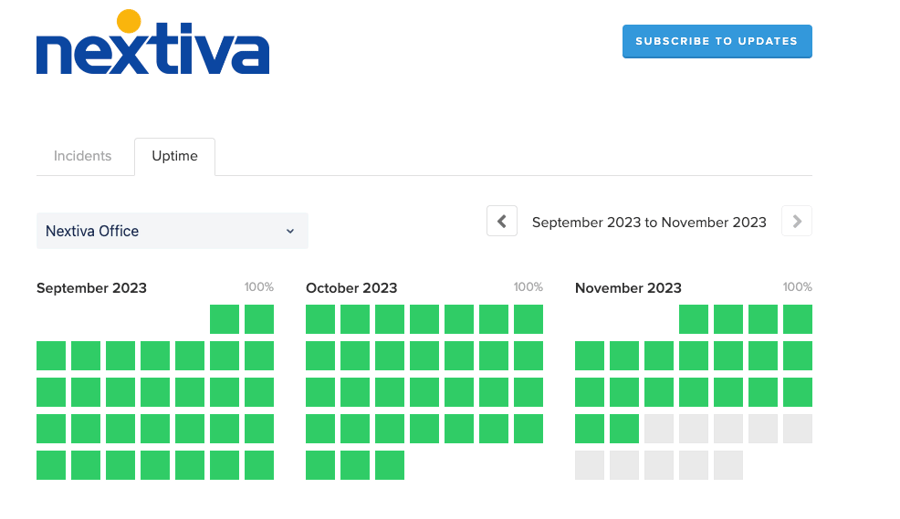
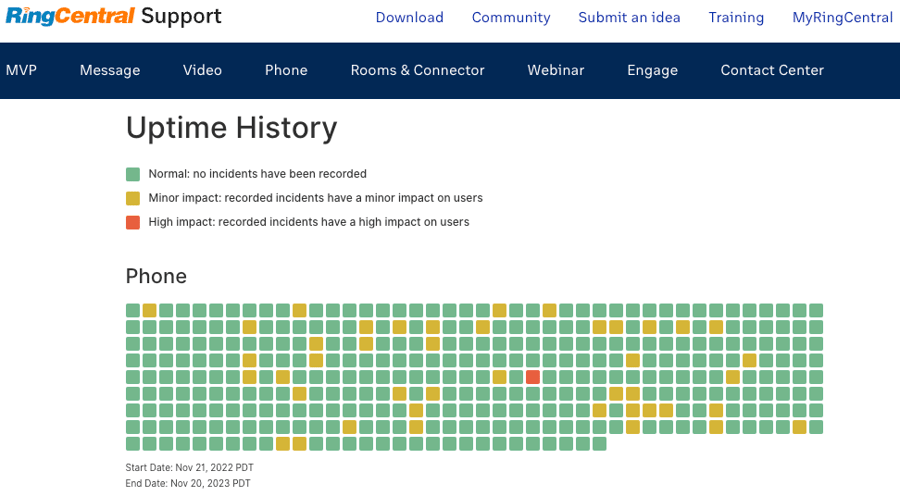
Nextiva vs. RingCentral Screen Pops
Call Pop is a unique feature of Nextiva. It shows essential information about the caller on the screen before answering the phone and during the conversation.
When a customer calls, Call Pop displays contact and critical account information, such as the customer experience score, the last survey score, the account value, and the sentiment of the last interaction.
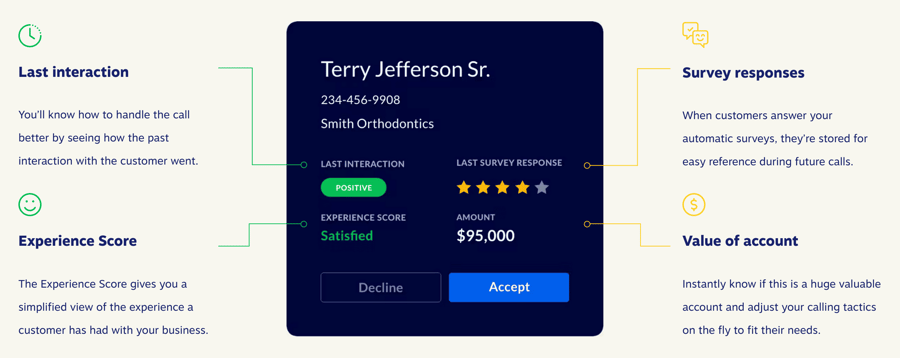
RingCentral vs. Nextiva Setup and Usability
Both RingCentral and Nextiva offer self-service portals to get you started. They also provide phone support to help with configuration.
Nextiva may have a slight edge here as some reviewers mention their customer service being more attentive during setup. It also has a dedicated onboarding team that guides new users through the setup process step-by-step.
Both platforms emphasize user-friendly interfaces.
RingCentral focuses on clear navigation with large buttons for key features on their desktop and mobile apps.
Nextiva prides itself on an intuitive interface that makes complex features like call routing and voicemail workflows easy to manage.
RingCentral vs. Nextiva: Which Phone Provider Is Best?
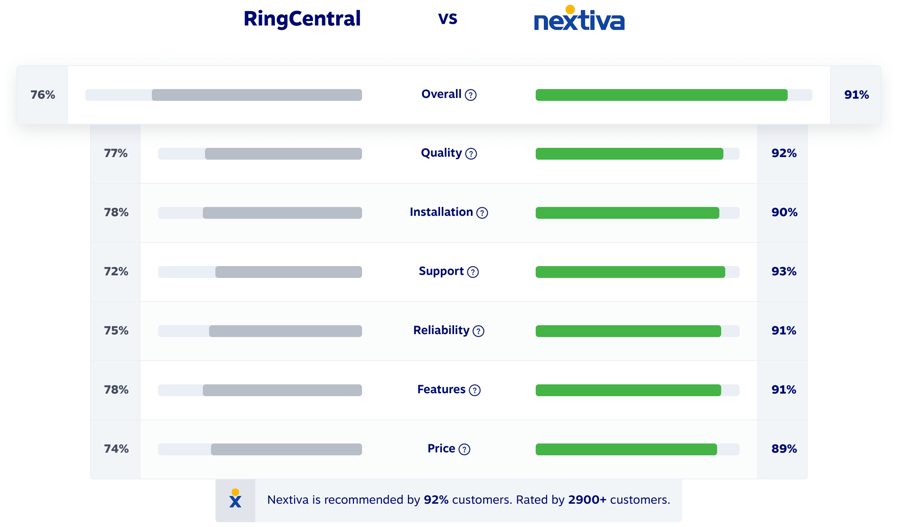
An independent study of customer reviews by GetVoIP has determined that Nextiva has outperformed RingCentral in six categories: quality, installation, support, reliability, features, and price.
Nextiva and RingCentral are excellent VoIP services and phone system solutions for any business. They both have enough PBX features to meet the demands of most companies. Besides, small businesses will benefit significantly from Nextiva’s volume, affordability, and long-term contract discounts.
Here’s where Nextiva stands out:
- A complete business phone system suitable for SMBs and enterprises
- Included features like mobile apps, auto attendants, toll-free minutes, text messaging, call routing, and app integrations
- Automation to direct and route calls based on holidays and business hours
- Highly rated 24/7 customer support via phone, chat, online tickets, and a knowledge base.
- A unified communication solution for voice, video, meetings, and SMS
- Excellent uptime and reliability with auto fail-over and monitoring
- Add-ons like SIP trunking, call centers, and contact centers, whenever you’re ready
Choosing between RingCentral and Nextiva depends on your budget, unique needs, and which platform features are most important to you. Here’s a quick breakdown to help you decide:
Choose Nextiva if:
- You prioritize affordability and value-packed plans with built-in features.
- You need a reliable business phone system with excellent uptime for multiple locations in North America.
- Superior customer support is important to you.
- You want a user-friendly interface for managing complex features like call routing.
See how Nextiva works for yourself
Talk with an expert and see how easy business communications should be.
Choose RingCentral if:
- Extensive integrations with business applications are crucial for your workflow.
- Your video meetings are typically smaller and don’t require advanced call management features.
- Your business operates internationally and requires phone numbers outside the United States.
- You need advanced customer analytics to track and optimize communication strategies.
Last updated: September 17, 2024

















 VoIP
VoIP 









